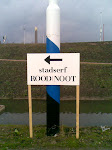Rosencrantz and Guildenstern are Dead was Tom Stoppard's breakthrough play. It was a huge critical and commercial success, making him famous practically overnight. Though written in 1964, the play was published in 1967, and it played on Broadway in 1968, where it won the Tony for best play.
The play cleverly re-interprets Shakespeare's Hamlet from the point of view of two minor characters: Rosencrantz and Guildenstern. The Laurel-and-Hardy-like pair are totally incidental to the action of Hamlet, subject to the whims of the King Claudius – who gets them to betray Hamlet – and then tricked by Hamlet into delivering a letter that condemns them to death (check out the Shmoop's guide to Hamlet; it's useful to know the basic plot). Stoppard's play turns Hamlet on its head by giving these two the main roles and reducing all of Shakespeare's major characters (including Hamlet) to minor roles. Written around and in-between the lines of Shakespeare's play, Stoppard brilliantly takes the main concerns of contemporary theater – absurdism, the inevitability of death, breakdown in communication and feeling – and inserts them into the text of a much earlier play.
The absurdist tradition that Stoppard is writing in suggests another enormous influence: Samuel Beckett's Waiting for Godot (1952). Beckett's play is just as important to Rosencrantz and Guildenstern are Dead as Hamlet is. Waiting for Godot consists of two tramps sitting on-stage bantering back and forth and waiting for someone named Godot, who never comes.

.jpg)

